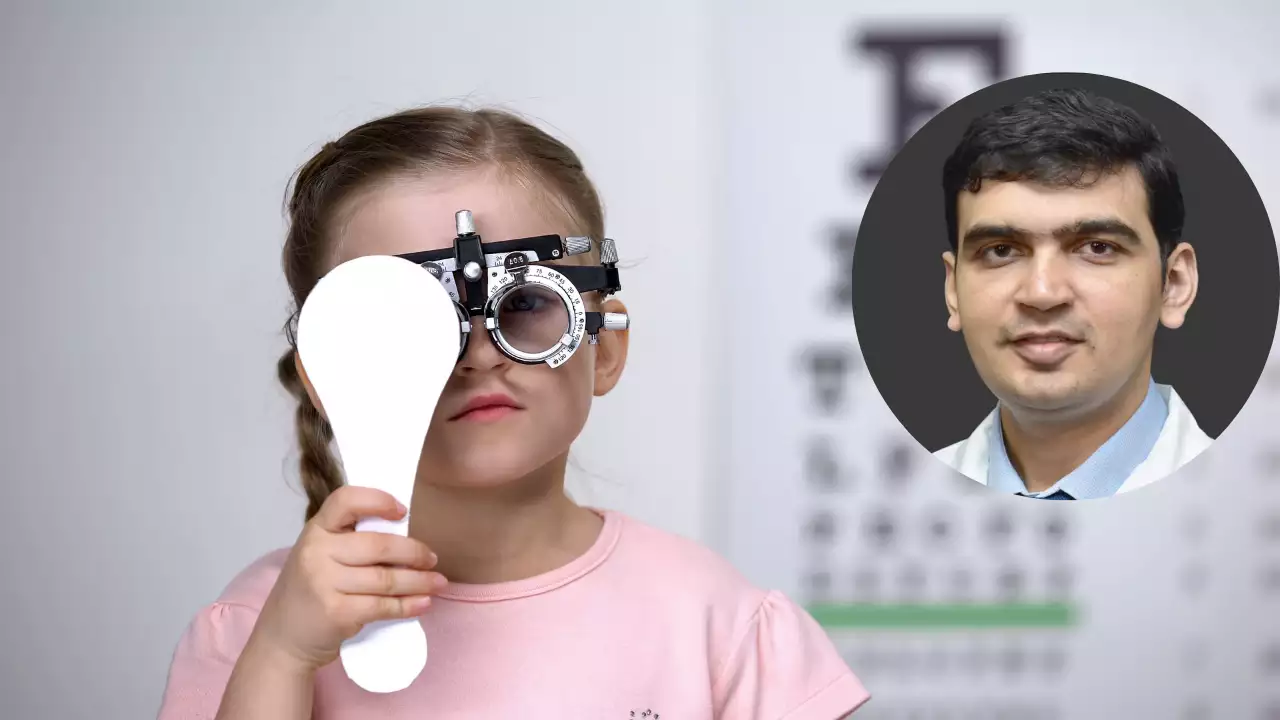Richa Saxena • 11 Dec 2024
The Rising Risk Of Myopia In India- Act Now To Save Eyes Of Our Children

(credit: Canva)
We have seen a significant jump in the number of kids needing glasses in the last few years. The COVID-19 pandemic has pushed this number toward dangerous territory. Now, we often see that almost every other child needs glasses and very often, many of them require high-power glasses. What has changed? Why is myopia becoming such a significant problem in the young generation?
Times Now Digital spoke to Dr. Vikas Veerwal, a senior consultant ophthalmologist, about the rising risk of Myopia cases in India. He has listed a few reasons for the same and what measures can be taken to prevent it.
Let us discuss what has resulted in this sudden change and what can be done to protect the eyes of our future generations
Myopia, or near-sightedness, is becoming increasingly common among children. Recently, there has been a significant rise in the need for distance vision glasses amongst the young population. This condition makes it difficult to see distant objects clearly and, if left unchecked, can lead to more serious eye problems like amblyopia, retinal detachment, maculopathy, etc in the future. It has been estimated that by 2050, almost 50% of the world's population will need glasses. But, we may reach this number much earlier, especially after the Covid-19 pandemic.
Why is Myopia on the Rise?
Most cases of myopia result from excessive elongation of the eye. This can result from genetic or environmental factors. One of the most critical causative factors for myopia development is prolonged periods of near-work (reading or mobile/tablet usage). The following factors are most important in determining the development of myopia
- Increased Screen Time/Excessive Near Work:
Prolonged use of smartphones, tablets, and computers along with excess near work causes an increase in myopia. There has been a considerable increase in screen time for the kids post-COVID-19 Covid-19 and that has resulted in myopia growing to epidemic proportions.
- Diet: Poor nutrition can also impact the healthy development of the eye.
What clues can tell you that your child may need glasses?
If your kid does any of the following, you need to get their eyes checked immediately:
- Squinting (making his/her eyes smaller) to see distant objects.
- Holding books or screens too close to the face.
- Complaints of headaches or eye strain.
- Difficulty seeing the board in school.
- Frequent rubbing/squeezing of eyes
What can we do to prevent the development or progression of myopia in children?
1. Encourage Outdoor Play: Make sure your child spends at least 1-2 hours outsideevery day. Outdoor play reduces the risk of myopia by allowing the eyes to focus on
distant objects in natural light. Natural sunlight is known to have a protective effect on
our eyes and reduces the elongation of eyes.
2. Limit Screen Time: Set daily limits on the use of digital devices. Avoid usage of
mobile phones in children below 10-12 years of age. This is the single most
important change we need to make to protect the eyes of our kids.
3. Distance is the Key: Avoid excess near-work. Shift tasks from mobile/tablet to
television/laptop. Avoid any screen usage in very young children.
4. Ensure Proper Lighting: Good lighting during reading or screen time reduces eye
strain. Avoid dim lighting when doing close-up activities.
5. Teach the 20-20-20 Rule: If your child is engaged in screen time or close-up work,
remind them to take a break every 20 minutes by looking at something 20 feet away
for at least 20 seconds.
6. Balanced Diet: Provide a diet rich in fruits and vegetables, especially those high in
Vitamin A, C, E, and Omega-3 fatty acids. These nutrients support eye health. Include
foods like carrots, spinach, sweet potatoes, oranges, almonds, walnuts, and fish.
7. Schedule Regular Eye Exams: Early detection is key. Ensure your child gets a
comprehensive eye exam every year. Remember, a child may not be able to
effectively communicate that they have an eye problem.
8. Medical treatments to prevent the progression of myopia: Fortunately, there are now
eye drops that can slow the increase in glass power. Also, special types of glasses
that help in stabilizing the growth of our eye have been developed and are being used
successfully. These treatments help in limiting the increase in glass power.
Don’t Wait, Act Now!
Protect your child’s vision today, by adopting these simple yet effective habits. Early intervention can make all the difference! We need to not just prevent the development of myopia but also try to minimize the progressive increase in glass power. Because, it is well known that the higher the glass power, the more the risk of serious complications developing in the eye.
Consult an Eye Specialist Today
A Kid's eyes should be checked once at birth and the best time to get the eyes checked for anyneed of glasses is when the child is at pre-school age of 3-4 years. This would result in early
detection of any eye problems, preventing further complications.
We need to be proactive today so that our next generation can have a brighter tomorrow.
Get Latest News Live on Times Now along with Breaking News and Top Headlines from Health and around the world.